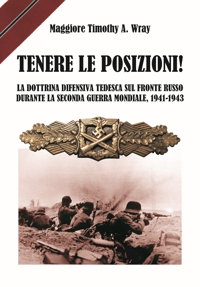Felice Palma. Massa 1583-1625. Collezione / Collection.
Testi di Andrei Cristina, Ciarlo Nicola, Federici Fabrizio, Claudio Casini e Sara Ragni.
Testo Italiano e Inglese.
Pontedera, 2024; ril. in cofanetto, pp. 289, ill. b/n e col., tavv. b/n e col., cm 24,5x34.
(L'Oro Bianco. Straordinari Dimenticati. The White Gold Forgotten Masters).
prezzo di copertina: € 160.00
|
Libri compresi nell'offerta:
Felice Palma. Massa 1583-1625. Collezione / Collection.
Testi di Andrei Cristina, Ciarlo Nicola, Federici Fabrizio, Claudio Casini e Sara Ragni.
Testo Italiano e Inglese.
Pontedera, 2024; ril. in cofanetto, pp. 289, ill. b/n e col., tavv. b/n e col., cm 24,5x34.
(L'Oro Bianco. Straordinari Dimenticati. The White Gold Forgotten Masters).
OMAGGIO (prezzo di copertina: € 160.00)
Le botteghe del marmo
Testo Italiano e Inglese.
Ospedaletto, 1992; ril., pp. 153, 10 ill. b/n, 60 ill. col., cm 24x29.
(Immagine).
OMAGGIO (prezzo di copertina: € 34.49)
Museo Stefano Bardini. I Bronzetti e gli Oggetti d'Uso in Bronzo
A cura di Nesi A.
Firenze, 2009; br., pp. 191, 102 ill. b/n, 7 ill. col., cm 17x24,5.
(Museo Stefano Bardini).
OMAGGIO (prezzo di copertina: € 30.00)
Bronzetti e Rilievi dal XV al XVIII Secolo
Bologna, 2015; 2 voll., ril. in cofanetto, pp. 729, ill., tavv. col., cm 21,5x30,5.
OMAGGIO (prezzo di copertina: € 90.00)
Mechanics notebook
Biscari Paolo - Poggi Carla - Virga Epifanio G.
Liguori Editore
Napoli, 2005; br., pp. 210, ill., cm 16,5x24.
(Matematica e fisica. Testi. 3).
collana: Matematica e fisica. Testi
ISBN: 88-207-2887-7 - EAN13: 9788820728878
Testo in: 
Peso: 0.36 kg
Chapter 1. Mathematical Language.
Points, Vectors, and Tensors.
Points and vectors.
Tensors.
Diads.
Bases of L(V).
Tensor Algebra.
Transposition.
Transposition Theorem.
Trace of a tensor.
Spectral decomposition.
Spectral Theorem.
Skew Tensors.
Axial vector.
Exterior product.
Orientation of V.
Duality.
Representation Theorem of Linear Forms.
Representation Theorem of Bilinear Forms.
Determinant of a tensor.
Orthogonal group of V .
Symmetries.
Isotropic tensors.
Transversely isotropic tensors.
Curves.
General properties.
Regular curves.
Examples.
Arc-length.
Tangent unit vector.
Curvature.
Normal and binormal unit vectors.
FRENET-SERRET'S- formulae.
Torsion.
Orientation of a curve.
Special co-ordinates.
Cylindrical co-ordinates.
Spherical co-ordinates.
Examples.
Example 1.1.
Example 1.2.
Example 1.3.
Example 1.4.
Example 1.5.
Example 1.6.
Example 1.7.
Example 1.8.
Example 1.9.
Chapter 2. Inertia.
Inertia of Rigid Bodies.
BOSCOVICH'S hypothesis.
Tensor of inertia.
Moments of inertia.
Principal axes of inertia.
Ellipsoid of inertia.
HUYGENS-STEINER'S Theorem.
STEINER's formula.
Composition Theorem.
Material symmetries.
Symmetry group.
Symmetry requirement.
Templates.
Planar systems.
Mirror symmetries.
Reflections.
Plane symmetry.
Uniaxial symmetry.
Spherical symmetry.
Inertia properties of simple homogeneous bodies.
Examples.
Example 2.1.
Example 2.2.
Example 2.3.
Example 2.4.
Example 2.5.
Example 2.6.
Example 2.7.
Example 2.8.
Example 2.9.
Example 2.10.
Example 2.11.
Example 2.12.
Chapter 3. Motion.
WEIERSTRASS' Theory.
One-dimensional systems.
Barriers.
Asymptotic limits and inversion points.
Periodic and non-periodic orbits.
Equilibrium stability.
Multi-dimensional systems.
Effective kinetic energy and effective potential Merostatic orbits.
Templates.
Central motion.
Degenerate central orbits.
Degenerate KEPLER 's problem.
Non-degenerate central orbits.
Orbit equation.
Orbit features.
Non-degenerate KEPLER'5 problem.
Examples.
Example 3.1.
Example 3.2.
Example 3.3.
Example 3.4.
Example 3.5.
Example 3.6.
Example 3.7.
Example 3.8.
Example 3.9.
Example 3.10.
Example 3.11.
Example 3.12.
Example 3.13.
Chapter 4. Equilibrium.
The Principle of Virtual Work.
Configurations.
Equilibrium configurations.
Virtual velocities.
Virtual power.
Constitutive restriction.
Principle of Virtual Work.
Rigid bodies.
Holonomic systems.
LIAPUNOV's Stability.
LlAPUNOV's definition.
DIRICHLET-LAGRANGE's Stability Theorem.
Instability Theorems.
LIAPUNOV 's First Instability Theorem.
LlAPUNOV 's Second Instability Theorem.
CHETAEV's Instability Theorem.
HAGEDORN-TALIAfERRO's Instability Theorem.
Normal modes.
Algebraic Lemma.
Simultaneous diagonalization.
Motion near equilibrium.
Quadratic Lagrangian.
Approximate motion.
Periodic approximate motions.
Stabilising constraints.
Templates.
Wake-up of latent modes.
Gyroscopic stabilization.
Examples.
Example 4.1.
Example 4.2.
Example 4.3.
Example 4.4.
Example 4.5.
Example 4.6.
Example 4.7.
Example 4.8.
Example 4.9.
Example 4.1O.
Example 4.11.
Example 4.12.
Example 4.13.
Example 4.14.
Example 4.15.
Example 4.16.
Chapter 5. Impact.
Impact Dynamics.
Impact.
Instantaneous impulse.
NEWTON's second law.
Balance laws.
Rigid bodies.
Unconstrained rigid body.
Kinetic energy.
Templates.
Free rigid bodies.
Restitution coefficient.
Direct impact.
Central impact.
Energy loss.
Rebound against a wall.
Incidence and reflection angles.
Impact between constrained rigid bodies.
Impulsive force on a fixed point.
Planar impact.
Impact mass.
Breakdown of an axis of rotation.
Motion after breakdown.
Examples.
Example 5.1.
Example 5.2.
Example 5.3.
Example 5.4.
Cited Authors.
Index.
Conversion Table: Italian-English.
Wirth Oswald € 14.25
€ 15.00 -5 %
Mauro Mancini € 30.40
€ 32.00 -5 %
Etica Coniugale. Per un Rinnovamento della Morale Matrimoniale
In gioco. Illusione e divertimento nell'arte italiana 1850-1950
Proarch Studium 2030. La città degli studenti/Call for projects
Officina 1922. Una Mostra alle Origini della Fortuna del Barocco
























































